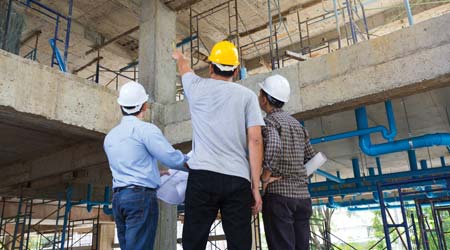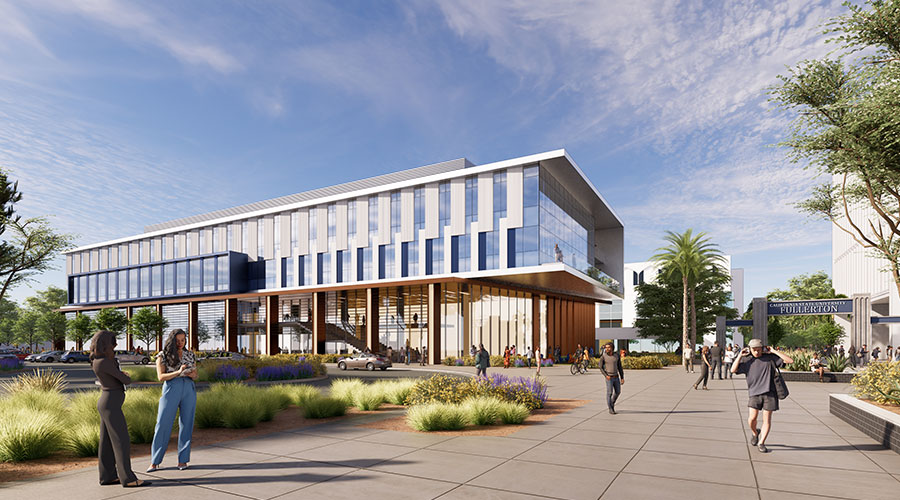Construction Success: Proper Planning, Good Communication, Right People
Keeping a construction project on budget means building a constant feedback loop between building owner, contractor, and designer.
The last thing any building owner wants is to get hit with a cost that isn’t in the budget. With a good cost database and awareness of the current market, the contractor usually has a good idea what to expect by the time bids are solicited — especially if trade contractors have been involved in the planning. If bids come back higher than expected, it’s important to try to understand why — whether the scope was not well defined or a particular material is hard to find — and determine whether there might be alternatives, Moss says. One way to avoid unpleasant surprises is for the contractor to solicit estimates before actual bids are taken.
Once shovels are in the ground, potential surprises can come from soil or rock conditions. If the project is an addition to an existing building, “the older it is, the tougher it is,” Moss says, “because there’s less documentation.” Renovations are also more likely to hold surprises as construction crews begin digging into the building, particularly if it is still occupied. An empty building lends itself better to reliable estimates of the scope of work needed.
During construction, Burton says, the building owner and the contractor will usually talk daily, or at least several times a week. Some owners receive weekly cost estimates from the construction manager, which is “pretty extreme but can be very effective,” Potter says. But, he adds, “there are always market conditions you can’t control.”
When the interior is finished enough for the final occupants to start getting tours, that represents another potential sticking point, because of the difference between looking at plans and seeing the result in three-dimensional space; Moss gives the example of an executive who might want a bigger office. And at that point, the building owner will have to pay a premium for changes, because special orders will lose their economies of scale.
Another reason for change orders on a very large project, Jones says, is that market conditions can change over the course of the 18 to 24 months it might take to complete the job, as demand rises or falls or products are discontinued. Or something may change on the building owner’s end. He gives the example of a pharmaceutical factory being built to produce a new product that ultimately fails its clinical trial.
The stigma around change orders is unfortunate, Burton says, because “there’s going to be tweaks.” The key is to try to keep the changes small and manageable. In recent years, he says, virtual reality modeling has helped building owners get a better sense of what finished interior space will look like early in the process.
An advantage to 3-D modeling, Potter says, is that it allows a more coordinated process with subcontractors before they submit their bids — but not all building owners are willing to pay that extra cost. Potter points out that the more aggressive a construction schedule is, the more likely that change orders will become a major factor. Some building owners, he says, pay a fee up front for “risk management” that includes a certain percentage for changes.
Point person
It is best for the building owner to designate a point person to deal with construction issues, and that person should have the authority to make decisions. “They should know the project and know what the project needs to be successful,” Burton says, “and be able to make decisions and keep the process going.” Potter agrees. On the best projects, he says, “the point person understands the importance of getting decisions made and not going back.”
Moss likes to know that the point person is “excited about the project, and well engaged in the process, and willing to make decisions.” Waiting for a building owner to make a decision is “often where we see delays,” he says. “They have to be able to herd the sheep on their end.”
“In large projects, there can be lots of competing needs from the (building owner’s) organization, and it’s important for the (owner) to have one point person who represents them,” Blanchett says. “The point person needs to be a good communicator, both in directing the work of the architect/engineer and the construction manager, and also within their own organization. This will keep the information flowing.”
Strong finish
Keeping the end user engaged all along will help ensure a successful handover, Burton says. It is also important for facility staff to get proper training in the new building’s systems.
Building and fire inspectors should be involved early in the construction process, “so there are no surprises when we ask for the final occupancy permit,” Moss says.
Another step that can make handover easier is quality control checks “throughout the life of the project,” Jones says. Some building owners do the punch list in phases, Potter says. If the top floor is ready, for instance, those punch list items found on the top floor might be preemptively taken care of on lower floors before those floors were ready for a walkthrough.
David Lewellen is a freelance writer who covers facility issues.
Email comments to edward.sullivan@tradepress.com.
Related Topics:












